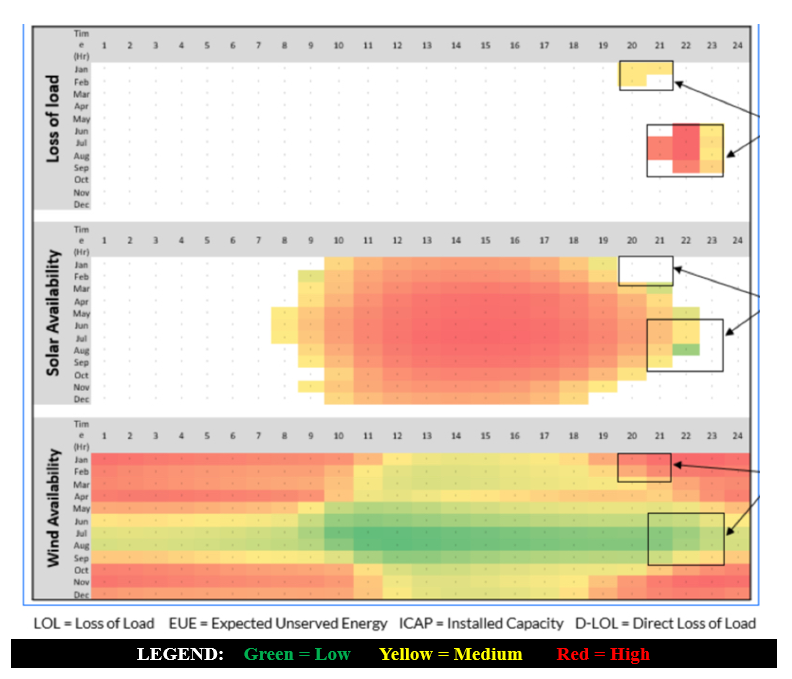As the legislative session hums along, one bill worth paying attention to is Senate Bill (SB) 757, which would bring protection for Missouri citizens’ energy needs. SB 757 would mandate that prior to closing an electricity-generating power plant, there needs to be a new power plant ready to replace it with equal or greater nameplate capacity (see discussion below). The goal of this bill is to ensure that Missouri’s energy grid is not compromised during a future energy transition.
In light of Ameren’s recent declaration that all coal plants will be decommissioned by 2045, this bill seems to add a level of accountability and protection, and could help prevent officials from undertaking actions that would compromise the energy needs of Missourians.
To make an energy grid truly reliable; we need both sufficient capacity and dispatchability.
Prior to examining SB 757, let me explain what these terms actually mean. I will examine the provisions of the bill in my next post.
First, what is nameplate capacity?
In simple terms, nameplate capacity is the amount of energy a power plant can produce if it is operating at 100 percent power all the time. So, if a coal plant is “rated” at a nameplate capacity of 1,000 megawatts (mw), that means 1,000 mw is the maximum the plant could produce—but that is not what it actually generates.
If the nameplate capacity isn’t what the plant generates, how much electricity do plants actually generate?
That answer depends on the type of energy source, the weather, the time of year, and the strategies used to generate energy. I wrote an earlier piece on all the types of energy sources in the United States that you can read here.
Another key variable that determines how much electricity is actually generated is something called “capacity factor.”
Capacity factor, in simple terms, is the percentage of time that a power plant is operating at maximum power (its nameplate capacity).
The capacity factor is not the same among different energy sources. For example, nuclear power plants operated at maximum power 92.7% of the time in 2021—meaning nuclear power had a capacity factor of 92.7%. Coal plants had a capacity factor of 49.3% in 2021, natural gas was 54.4%, wind was 34.6%, and solar photovoltaic (solar panels) was at 24.6%.
Let’s say five different types of plants have a nameplate capacity of 1,000 mw (enough to power around 565,000 homes). Here’s how the capacity factor would affect rates of electricity generation:

Now that we better understand capacity, what is dispatchability?
Dispatchability is essentially an energy source’s ability to be “dispatched” to the grid’s consumers whenever they need it. Energy is neither created nor destroyed, meaning that when we “use” energy, that energy has to be coming from somewhere.
There are a few main “baseload resources” that have ample dispatchability: nuclear, coal, hydroelectric, and natural gas. On the other hand, intermittent resources such as solar and wind have times of day and certain weather conditions where they lack production, meaning they have less dispatchability.
How does dispatchability come into play in decommissioning power plants?
The reason we produce energy is to power things society needs and wants—and we are living in a world where we want and need electricity 24/7. In an internet-driven society, we want to stream movies at night, meet on Zoom for work meetings, play video games, mine bitcoins, or potentially even have a “metaverse.” The growing number of data centers that power these activities devour large swaths of energy, and they have to be operating constantly. If electric vehicles become more popular, we will have millions and millions of individuals using an immense amount of energy overnight to charge them.
This is where some of the dilemma lies. The energy demand market is trending towards 24/7 energy, while many proposed replacement plants are intermittent and don’t produce energy at night, when it is cloudy, or when there is no wind.
Here is a table taken from the Midcontinent Independent System Operator (MISO), which shows the dispatchability of solar and wind and where loss of load occurs. The numbers 1–24 on the x-axis represent the hours of the day, and the y-axis represents the months of the year.

The top “loss of load” graph shows the times where both renewables struggle to be dispatchable when paired together. Some states like California have experienced this dispatchability problem and have tried to mitigate it with the vast expansion of battery infrastructure. This is a fine enough idea and does help with improving reliability. However, there is no realistic path to mass expansion for the needed battery infrastructure to maintain reliability if renewables continue to be scaled. The battery technology also still has problems that need to be ironed out. We should not bet our energy future on battery technology given all the existing issues.
That bet would be too risky, as it could potentially lead to utilities or the government dictating when individuals and businesses may use electricity— such electricity rationing.
In order to achieve dispatchability and maintain reliability, the replacements for coal cannot just be renewables—we need nuclear and other baseload energy sources. Even if you believe that renewables should be the primary energy source, there should be a highly dispatchable and reliable source backing them up.
Now that we understand the two legs that grid reliability needs to stand on, we can turn back to SB 757 in my next blog post.



